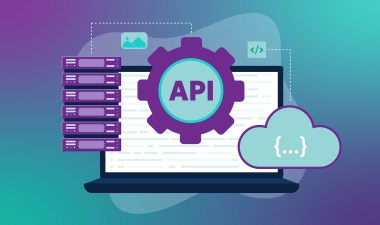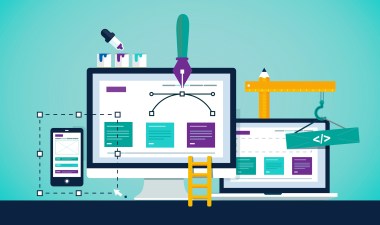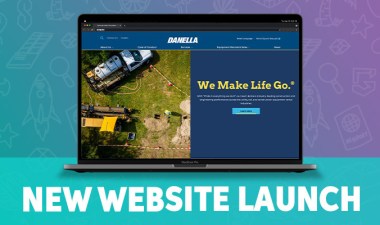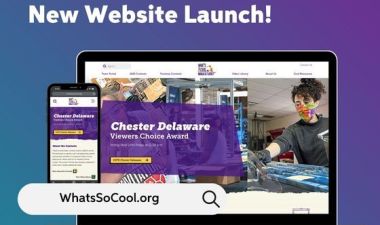Coffee. Oxygen. Smartphone.
If you guessed “Things you can’t live without,” congratulations! You’ve won this totally fake edition of The $100,000 Pyramid!
And if you’re a tech lead like me, there’s one more item you’d add to this list.
APIs.
What are APIs?
Short for Application Programming Interface, APIs are functions and procedures that allow two or more independent computer programs or databases (web clients or mobile apps, for example) to communicate.
Put another way, APIs are middlemen that let programmers build interactions between web applications – and they’re more common than you might realize.
Do you use the weather app that came with your smartphone? Because Apple and Google source weather data, your smartphone relies on an API to get that info in your hands.
Do you ever log into a website using Facebook? This is another instance of using an API.
Use PayPal to buy something off of a third-party website? API.
Put simply, today, APIs are building blocks of our everyday digital activities, expectations, and experiences.
The Business Case for Knowing API Basics
Maybe you’re thinking, “Okay, okay, I get the importance of APIs – but why do I need to know about this back-end functionality?”
It’s a valid question. The average user doesn’t necessarily need to understand or even have an awareness of APIs. However, a high-level understanding of APIs is an asset to business owners looking to maximize their digital strategy.
Think about it: APIs are uniquely capable of introducing features and functions to both internal and external users, and are therefore increasingly relevant to business objectives, overall profit, and ROI. Knowing a little about how they work helps you understand options that exist for your business, and helps you communicate with strategists and developers working on your brand.
Ready to arm yourself with API working knowledge? Read on.
Four Types of Web APIs
APIs vary in terms of usage and sourcing and are generally organized into four categories. Note that these categories are not airtight; there’s often overlap. They nonetheless offer a helpful high-level sense of API differences:
- Public APIs (also called external APIs, open APIs, or open-source APIs) are available to any developer or business looking to build, enhance, or connect applications. Developers share them publicly as a means of lead generation, to embody transparency, or for community development[1]. Hammer Marketing uses public geolocation APIs (including Google Maps) for several client projects to approximate a user’s location. Other public APIs we’ve utilized are Twilio (which allows for global calling and SMS messaging), Send Grid, and MailGun (both email platforms).
- Internal (or private) APIs connect systems and data within an enterprise. An internal API might, for example, merge an organization’s payroll with its HR system. Historically light on security and authentication because they’re used internally, regulation surrounding internal APIs is now increasing. Hammer Marketing customizes many internal APIs for customers across use cases and needs; we’ve primarily used them to build progressive web apps (PWAs).
- Partner APIs facilitate connection between platforms belonging to two or more strategic business partners. An API designed explicitly to connect Google to a weather data source, for example, would be a private API.
- Last but not least, Composite APIs are sequences of APIs whose total functionality is greater than the sum of its parts. Composite APIs usually consist of APIs with similar or interdependent operations that can be maximized through strategic combinations in highly complex programming scenarios, or to improve speed or performance. Hammer Marketing has built custom-built components for several clients that allows them to connect APIs in this capacity.
Two API Formats
Nuance aside, all APIs exchange commands and data. This requires well-defined protocols and architectures – that is, rules, structures and constraints that govern an API’s operation. API protocol can loosely be organized into two categories: SOAP and REST.
- SOAP – short for simple object access protocol – is the more structured and complex of the two, used primarily on government platforms and other highly regulated spaces. SOAP’s defining characteristic is that its information goes through web services description language (WSDL), a machine-readable format for describing the web service’s operations, data types, protocol details, and location.
- REST – short for representational state transfer – makes up the lion’s share of Hammer Marketing’s API design, and APIs as a whole. Beyond being simpler and more most effective than SOAP, REST uses more common application formats. JSON – JavaScript Object Notation – is the most generally accepted format, but HTML and XML are also utilized.
A Hammer Case Study
In 2020, Hammer Marketing designed the VicFlex progressive web application for our client, Victaulic, a developer and manufacturer of mechanical pipe joining systems. A versatile and state-of-the-art quoting tool, VicFlex pairs with the easy-to-use product catalog thanks to an API custom-designed by Hammer Marketing. The VicFlex allows users to input parameters for a project and receive applicable solutions. These solutions could then be added to an overall quote via their SKU number, allowing for an easier approach than clicking through multiple pages on their site.
Had enough API talk for one day? We get it! APIs are complicated. The good news: The Hammer Marketing team is here to give you only as much API knowledge as you need…and to handle the rest in bringing your digital needs to fruition. Reach out to us!
[1] https://blog.dreamfactory.com/4-reasons-why-organizations-use-open-apis/

A Handy Guide to APIs (and Why You Should Know at Least a Little About Them in 2024)
Coffee. Oxygen. Smartphone. If you guessed “Things you can’t live without,” congratulations! You’ve...

Driving Business Growth With Responsive Web Design: Why It Matters and How to Get There
What’s the big deal about responsive web design, anyway? Do users really care if...

Website Redesign Elevates a Construction Company’s Online Presence
Since its founding in 1972, construction services company Danella has successfully evolved to meet...

Five Attributes of Attractive, User-Friendly School Websites
Educational institutions need websites that are secure, flexible, robust, and attractive to users. Best-in-class...

Supporting Growth for a Local Credit Union Through an Enhanced User Experience
We’re proud to announce our latest website launch, Riverfront Federal Credit Union. By focusing...

What’s So Cool About Manufacturing
In a world where social media dominates the attention of young people, it can...



